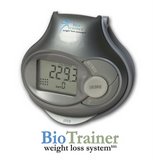Daily consumption of almonds may trigger feelings of satiety and help reduce overall calorie intake, according to research by scientists from Purdue University.
Dieters often find it difficult to regulate their appetite, but a new study recently presented at the North American Association for the Study of Obesity's annual meeting indicates that almonds may help stop unhealthy snacking by enhancing feelings of fullness between meals.
The study -- funded by the Almond Board of California -- examined the effects of supplementing the diet with almonds on 20 overweight women. The participants were divided into two groups: The first was given two servings (300 calories) of almonds a day for ten weeks, followed by 10 weeks with no almonds, while the second began with 10 weeks of no almonds, followed by 10 weeks of two daily servings of almonds.
The researchers, led by Richard Mattes, found that when the women were supplementing their diets with almonds, they experienced no changes in energy intake, body weight, body fat or body mass index (BMI).
"We concluded that the women found their daily almond snack to be very filling, and so they naturally compensated in the caloric intake at other times of the day," Mattes said.
Essentially, because the almonds triggered feelings of fullness, the women consumed fewer calories from unhealthy sources.
They also noted that some of the fat found in almonds is not digested or absorbed by the body after consumption, which leads to lower caloric intake than the number indicated on almonds' nutrition labels.
The researchers stressed the need for larger, longer trials to prove their findings, as well as additional studies to determine which almond compounds are responsible for satiety.
Consumer demand for almonds has dramatically increased in recent years as the nuts' health benefits have become more widely known.
 Measuring your caloric burn with the help of the BioTrainer doesn't need to take place just in the gym. Working out can mean working out outdoors.
Measuring your caloric burn with the help of the BioTrainer doesn't need to take place just in the gym. Working out can mean working out outdoors.

 BioTrainer visits Dr. Fitness and The Fat Guy
BioTrainer visits Dr. Fitness and The Fat Guy







